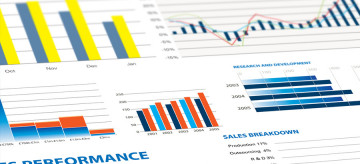- Advertising
- Bare Metal
- Bare Metal Cloud
- Benchmarks
- Big Data Benchmarks
- Big Data Experts Interviews
- Big Data Technologies
- Big Data Use Cases
- Big Data Week
- Cloud
- Data Lake as a Service
- Databases
- Dedicated Servers
- Disaster Recovery
- Features
- Fun
- GoTech World
- Hadoop
- Healthcare
- Industry Standards
- Insurance
- Linux
- News
- NoSQL
- Online Retail
- People of Bigstep
- Performance for Big Data Apps
- Press
- Press Corner
- Security
- Tech Trends
- Tutorial
- What is Big Data
4 Questions to Ask (and Answer!) Before Taking on Big Data in Your Organization

Most businesses are aware of the concept of big data. A fair number have begun using it. But big data hasn’t yet permeated all businesses and industries, because there are still many questions to answer. Why do we need it? Where do we get it? How to we get the answers we need out of it? Here are the most crucial questions to ask and get answers for before delving into a big data initiative.
1. What Can Big Data Offer Your Organization?

Before you delve into the technical issues of big data, you need to know why you need it and what it stands to provide your business. Data analytics is no menial task. All the data you can muster will be useless unless it is asked relevant and meaningful questions in the right way. Some businesses use data to better understand their customers. Others use it to improve their processes or to glean useful business intelligence. It can even be used to predict future trends, but you have to decide what questions you’re going to ask the data so that your collection, analysis, and reporting deliver a measurable ROI.
2. What Kind(s) of Data Can Give You What You’re Looking for?
The types of data available are also varied. Most big data platforms combine a mix of structured, semi-structured, and unstructured data. Structured data is formatted, such as the data stored in a relational database like SQL. Structured data can be read by both humans and machines. Semi-structured data does not come in the formal structure of a relational database, but does contain tags that separate the semantic elements. Unstructured data also does not fit neatly into a relational database—it includes things like photos and videos, audio and other data that lacks formalized structure. Determine what kinds of data can provide answers to your questions.
3. Where Will That Data Come From?

Mobile apps and the Internet of Things devices are powerful resources for big data.
Next, it’s time to determine where you will get all that data. Most organizations are already sitting on mounds of all types of structured, semi-structured, and unstructured data, including emails, documents, video files and images, as well as their existing databases and spreadsheets. You can also invest in social media data, such as Twitter Firehose data. Companies also capture data through their mobile apps and other Internet of Things devices. Sensors, cameras, and other sources can be useful for certain applications, as well.
4. How Will You Store, Manage, and Analyze the Data?
Before you can begin a big data initiative, you will need to determine a way to store, manage, and analyze the data. Since the hardware, software, and maintenance necessary for big data is expensive and troublesome to manage, most organizations turn to cloud storage, and often use cloud-based applications for data analytics, as well. Tools like NoSQL databases and the Hadoop framework have commanded a lot of attention for their usefulness in housing and processing semi-structured and unstructured data that don’t work on traditional database and analytics platforms.
Data lakes can also be incredibly powerful. Data lakes allow you to collect and store large volumes of unformatted data until there is a use for it. Try this limited offer: discover the first Full Metal Data Lake as a Service in the world. Get 1TB free for life - limited to 100 applicants. Start here.
Readers also enjoyed:

Learning to Live with (and Overcome) Hadoop's Flaws


Leave a Reply
Your email address will not be published.